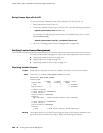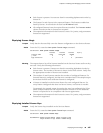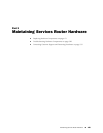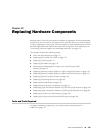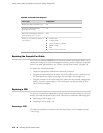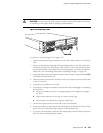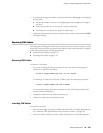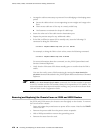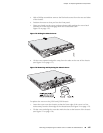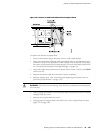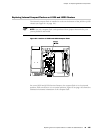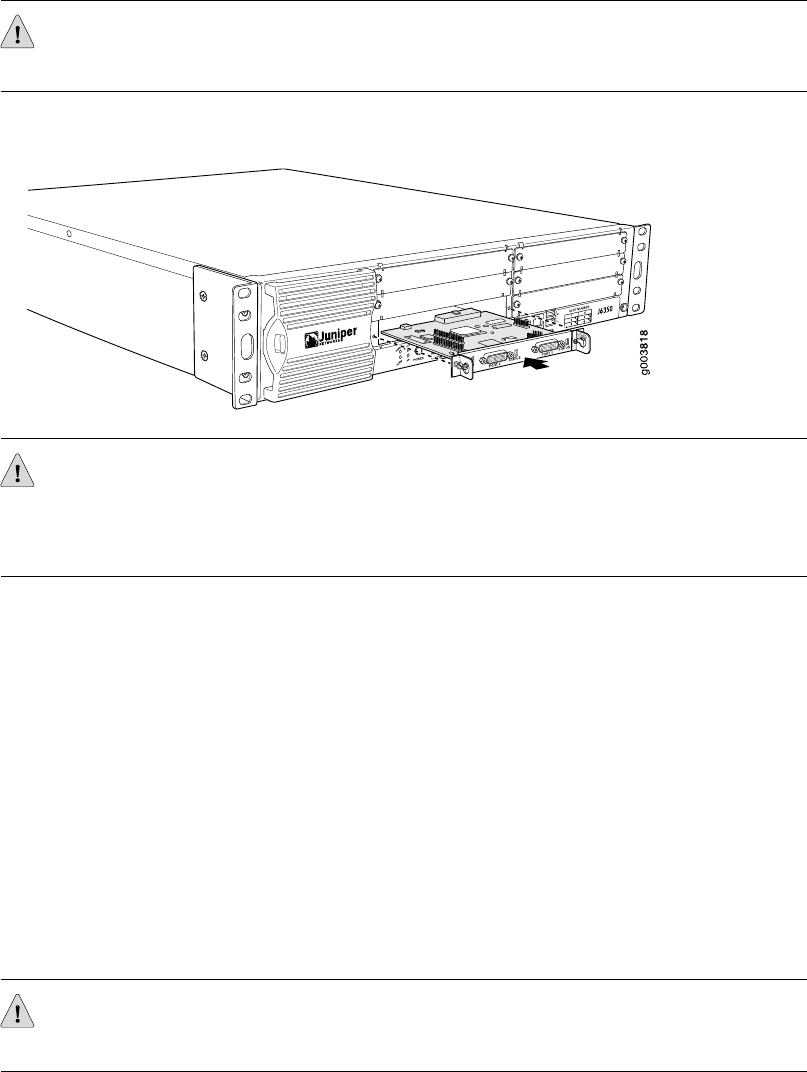
Installing a PIM
CAUTION: Do not hot-swap PIMs. Failure to power off the router before removing
or installing a PIM might result in damage to the hardware.
Figure 74: Installing a PIM
CAUTION: Do not install a combination of PIMs in a single chassis that exceeds the
maximum power and heat capacity of the chassis. If J-series power management is
enabled, PIMs that exceed the maximum power and heat capacity remain offline
when the chassis is powered on.
To verify that the combination of PIMs to be installed in a chassis do not exceed the
power and heat capacities for the J4350 or J6350 router, see “Planning for Power
Management” on page 112.
To install a PIM (see Figure 74 on page 174):
1. Attach an electrostatic discharge (ESD) grounding strap to your bare wrist and
connect the strap to the ESD point on the chassis, or to an outside ESD point if
the Services Router is disconnected from earth ground. For more information
about ESD, see “Preventing Electrostatic Discharge Damage” on page 251.
2.
Press and release the power button to power off the router. Verify that the POWER
LED blinks and then turns off.
3. Align the notches in the connector at the rear of the PIM with the notches in the
PIM slot in the Services Router, and slide the PIM in until it lodges firmly in the
router.
CAUTION: Slide the PIM straight into the slot to avoid damaging the components on
the PIM.
4. Tighten the captive screws on each side of the PIM faceplate.
5. Insert the appropriate cables into the cable connectors on the PIM.
174 ■ Replacing a PIM
J2320, J2350, J4350, and J6350 Services Router Getting Started Guide



